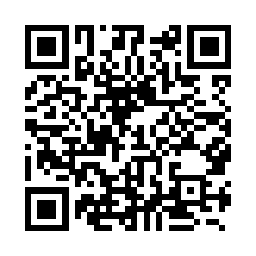
Automatic link establishment

Automatic Link Establishment, commonly known as ALE, is the worldwide de facto standard for digitally initiating and sustaining HF radio communications. ALE is a feature in an HF communications radio transceiver system that enables the radio station to make contact, or initiate a circuit, between itself and another HF radio station or network of stations. The purpose is to provide a reliable rapid method of calling and connecting during constantly changing HF ionospheric propagation, reception interference, and shared spectrum use of busy or congested HF channels. Automatic Link Establishment, commonly known as ALE, is the worldwide de facto standard for digitally initiating and sustaining HF radio communications. ALE is a feature in an HF communications radio transceiver system that enables the radio station to make contact, or initiate a circuit, between itself and another HF radio station or network of stations. The purpose is to provide a reliable rapid method of calling and connecting during constantly changing HF ionospheric propagation, reception interference, and shared spectrum use of busy or congested HF channels. A standalone ALE radio combines an HF SSB radio transceiver with an internal microprocessor and MFSK modem. It is programmed with a unique ALE address, similar to a phone number (or on newer generations, a username). When not actively in contact with another station, the HF SSB transceiver constantly scans through a list of HF frequencies called channels, listening for any ALE signals transmitted by other radio stations. It decodes calls and soundings sent by other stations and uses the bit error rate to store a quality score for that frequency and sender-address. To reach a specific station, the caller enters the ALE Address. On many ALE radios this is similar to dialing a phone number. The ALE controller selects the best available idle channel for that destination address. After confirming the channel is indeed idle, it then sends a brief selective calling signal identifying the intended recipient. When the distant scanning station detects ALE activity, it stops scanning and stays on that channel until it can confirm whether or not the call is for it. The two stations' ALE controllers automatically handshake to confirm that a link of sufficient quality has been established, then notify the operators that the link is up. If the callee fails to respond or the handshaking fails, the originating ALE node usually selects another frequency either at random or by making a guess of varying sophistication. Upon successful linking, the receiving station generally emits an audible alarm and shows a visual alert to the operator, thus indicating the incoming call. It also indicates the callsign or other identifying information of the linked station, similar to Caller ID. The operator then un-mutes the radio and answers the call then can talk in a regular conversation or negotiates a data link using voice or the ALE built-in short text message format. Alternatively, digital data can be exchanged via a built-in or external modem (such as a STANAG 5066 or MIL-STD-188-110B serial tone modem) depending on needs and availability. The ALE built-in text messaging facility can be used to transfer short text messages as an 'orderwire' to allow operators to coordinate external equipment such as phone patches or non-embedded digital links, or for short tactical messages. Due to the vagaries of ionospheric communications, HF radio as used by large governmental organizations in the mid-20th century was traditionally the domain of highly skilled and trained radio operators. One of the new characteristics that embedded microprocessors and computers brought to HF radio via ALE, was alleviation of the need for the radio operator to constantly monitor and change the radio frequency manually to compensate for ionospheric conditions or interference. For the average user of ALE, after learning how to work the basic functions of the HF transceiver, it became similar to operating a cellular mobile phone. For more advanced functions and programming of ALE controllers and networks, it became similar to the use of menu-enabled consumer equipment or the optional features typically encountered in software. In a professional or military organization, this does not eliminate the need for skilled and trained communicators to coordinate the per-unit authorized frequency lists and node addresses – it merely allows the deployment of relatively unskilled technicians as 'field communicators' and end-users of the existing coordinated architecture. An ALE radio system enables connection for voice conversation, alerting, data exchange, texting, instant messaging, email, file transfer, image, geo-position tracking, or telemetry. With a radio operator initiating a call, the process normally takes a few minutes for the ALE to pick an HF frequency that is optimum for both sides of the communication link. It signals the operators audibly and visually on both ends, so they can begin communicating with each other immediately. In this respect, the longstanding need in HF radio for repetitive calling on pre-determined time schedules or tedious monitoring static is eliminated. It is useful as a tool for finding optimum channels to communicate between stations in real-time. In modern HF communications, ALE has largely replaced HF prediction charts, propagation beacons, chirp sounders, propagation prediction software, and traditional radio operator educated guesswork. ALE is most commonly used for hooking up operators for voice contacts on SSB (single-sideband modulation), HF internet connectivity for email, SMS phone texting or text messaging, real-time chat via HF text, Geo Position Reporting, and file transfer. High Frequency Internet Protocol or HFIP may be used with ALE for internet access via HF. The essence of ALE techniques is the use of automatic channel selection, scanning receivers, selective calling, handshaking, and robust burst modems. An ALE node decodes all received ALE signals heard on the channel(s) it monitors. It uses the fact that all ALE messages use forward error correction (FEC) redundancy. By noting how much error-correction occurred in each received and decoded message, an ALE node can detect the 'quality' of the path between the sending station and itself. This information is coupled with the ALE address of the sending node and the channel the message was received on, and stored in the node's Link Quality Analysis (LQA) memory. When a call is initiated, the LQA lookup table is searched for matches involving the target ALE address and the best historic channel is used to call the target station. This reduces the likelihood that the call has to be repeated on alternate frequencies. Once the target station has heard the call and responded, a bell or other signalling device will notify both operators that a link has been established. At this point, the operators may coordinate further communication via orderwire text messages, voice, or other means. If further digital communication is desired, it may take place via external data modems or via optional modems built into the ALE terminal. This unusual usage of FEC redundancy is the primary innovation that differentiates ALE from previous selective calling systems which either decoded a call or failed to decode due to noise or interference. A binary outcome of 'Good enough' or not gave no way of automatically choosing between two channels, both of which are currently good enough for minimum communications. The redundancy-based scoring inherent in ALE thus allows for selecting the 'best' available channel and (in more advanced ALE nodes) using all decoded traffic over some time window to sort channels into a list of decreasing probability-to-contact, significantly reducing co-channel interference to other users as well as dramatically decreasing the time needed to successfully link with the target node. Techniques used in the ALE standard include automatic signaling, automatic station identification (sounding), polling, message store-and-forward, linking protection and anti-spoofing to prevent hostile denial of service by ending the channel scanning process. Optional ALE functions include polling and the exchange of orderwire commands and messages. The orderwire message, known as AMD (Automatic Message Display), is the most commonly used text transfer method of ALE, and the only universal method that all ALE controllers have in common for displaying text. It is common for vendors to offer extensions to AMD for various non-standard features, although dependency on these extensions undermines interoperability. As in all interoperability scenarios, care should be taken to determine if this is acceptable before using such extensions.


